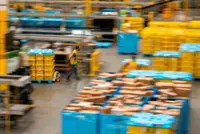For local brands without a brick and mortar store, fashion is a tough industry and you need to be creative to survive in the digital world. photo: 123rf.com
Shopping online is becoming the preferred method to purchasing everything from groceries to electronics, and more people are embracing it to fuel their fashion needs.
Today, people are using online retailers more than ever for their fashion purchases.
Already a subscriber? Log in
Save 30% OFF The Star Digital Access
Cancel anytime. Ad-free. Unlimited access with perks.





